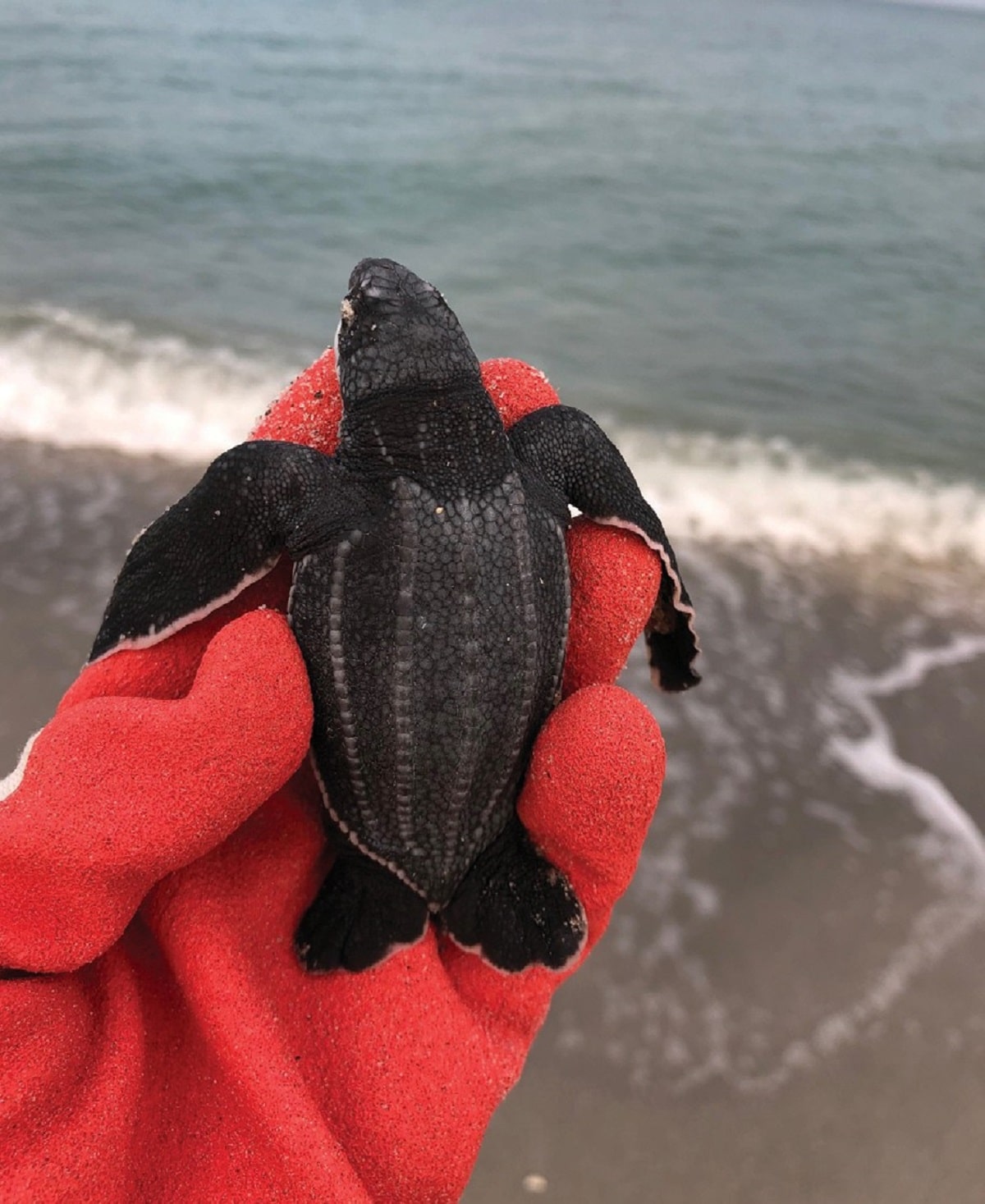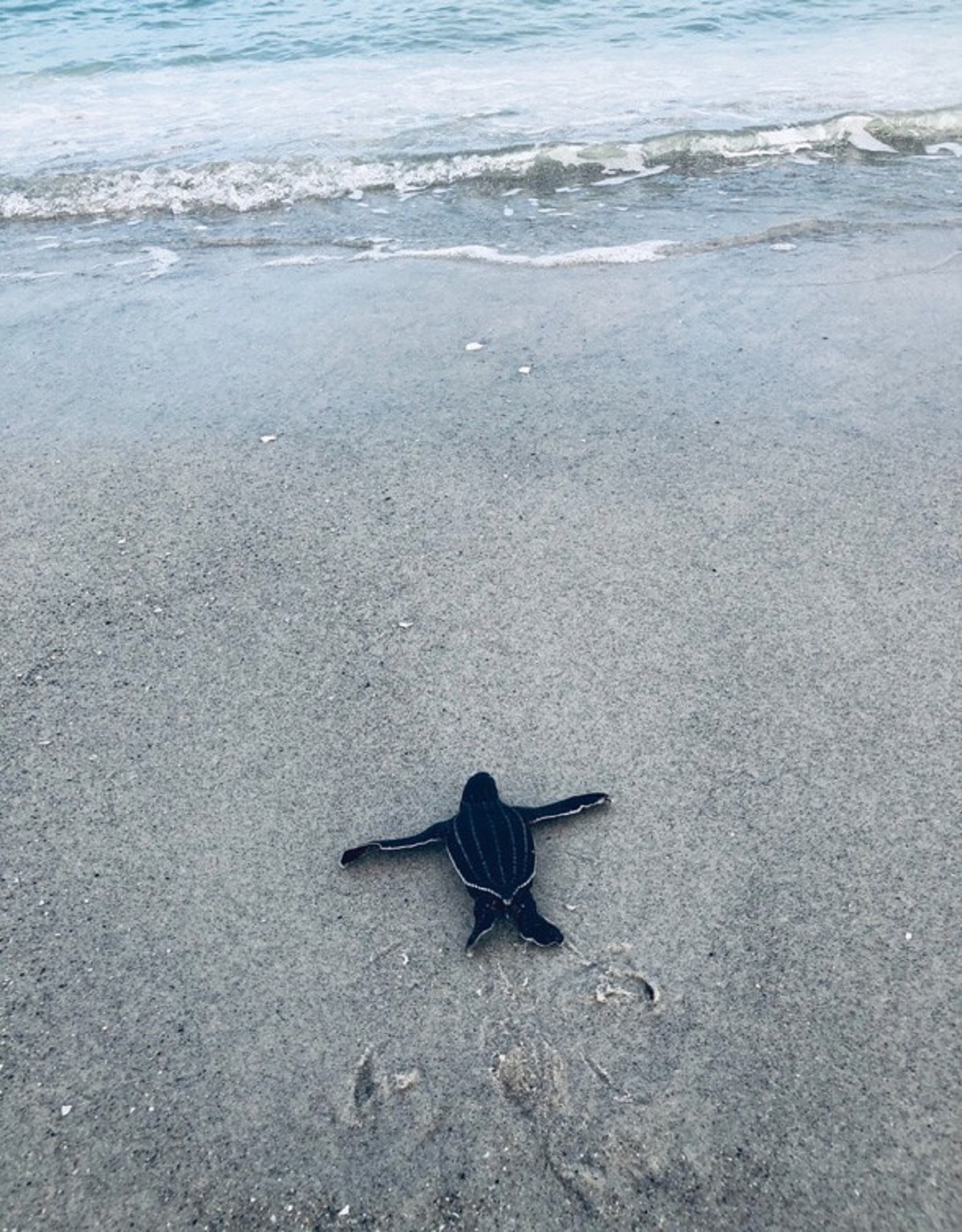

For loyal followers of our blog, you may be delighted to learn that the first leatherback sea turtle nest ever on Captiva has hatched!
The Sanibel Captiva Conservation Foundation has been keeping us up to date on this very rare occurence.
SCCF Volunteer Permittee Kerry Salatino saw that the leatherback nest had hatched recently and was able to photograph two hatchlings that were still making their way the sea. One of the small, black turtles, which are more than double the size of loggerhead hatchlings, fell into a hole that hadn’t been filled in by beachgoers.
“Fortunately, Kerry was able to rescue it from the hole and help it get safely to sea,” said SCCF Coastal Wildlife Director Kelly Sloan. “These hatchlings also crawled toward the dunes before turning towards the sea because of artificial lighting. This is a great example of why it’s so important to fill in holes and turn off all lights visible from the beach.”
The hatching marked the first time a leatherback nest has been documented on Captiva. In August 2009, a leatherback nest hatched on Sanibel Island, which was a first for all of Lee and Collier counties.
The largest of the seven species of sea turtles found worldwide, leatherback sea turtles very rarely nest on Gulf Coast beaches. In Florida, they normally nest on the Atlantic Coast. Leatherbacks are listed as endangered in the U.S. Few survive to adulthood, with estimates ranging from one in 1,000 to one in 10,000.
The first evidence of a leatherback this season was no April Fool’s joke as tracks were discovered on April 1 on Sanibel, before early morning beach monitoring began on April 15. Then, on May 10, the SCCF Sea Turtle Team encountered a leatherback on Sanibel and named her Juniper.
“It has been really exciting to see such a giant and uncommon species on Sanibel,” said SCCF Research Associate Andrew Glinsky.
The leatherback sea turtle is larger, dives deeper, travels farther, and tolerates colder waters than any other sea turtle. Most leatherbacks average 6 feet in length and weigh from 500 to 1,500 pounds. At a little over 5-feet-long, Juniper is an average-sized leatherback.
“While we don’t have visual confirmation that the nest that hatched on Captiva was laid by Juniper, we are pretty confident these are Juniper’s offspring,” said Ms. Sloan, adding that the first documented leatherback nest was inundated by the surf of Tropical Storm Cristobal and did not hatch.
Leatherbacks also look distinctively different from other sea turtles. Instead of a shell covered with scales or shields, leatherbacks are covered with a firm, leathery skin and have seven ridges running lengthwise down their backs.
In May, Ms. Sloan reached out to biologists with Florida Leatherbacks Inc., a nonprofit dedicated to researching leatherback turtles that nest on the east coast of Florida. Chris Johnson and Kelly Martin, of FLI, successfully placed a satellite tracking device on Juniper while she was nesting on Sanibel on May 19.
“This was an amazing opportunity to track a leatherback from a location never before tracked and gain valuable research data about her behavior and movements in the Gulf of Mexico,” said Ms. Martin.
Based on timing between nests, FLI biologists believe that Juniper may have laid nine nests this season. Their tracking shows that she swam as far north as Sarasota and out into depths of nearly 200 feet in the gulf in-between nesting events.
To continue tracking Juniper, click here!


